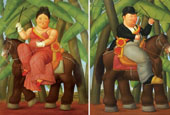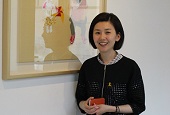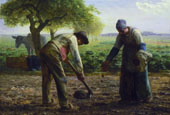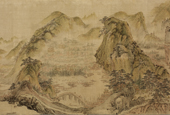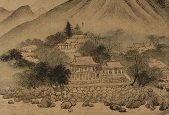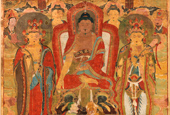Painter Lee Quede (1913-1965) dedicated himself to art under the gloom of Japanese colonialism. When Korea was granted independence after 35 years of colonial rule, it suffered another ordeal due to the division of the peninsula and then the Korean War (1950-1953).
Even during colonial times, Lee established his own style based on Korean history and traditions. Later, he produced some of his masterpieces amid political turmoil arising from tension between the left wings and the right wings of society after independence.
A large retrospective on Lee Quede, a master artist of the early 20th century, is now underway at the Deoksugung Palace branch of the National Museum of Modern and Contemporary Art (MMCA) in Seoul. "An Epic of Liberation: Lee Quede" is designed to shed new light on the painter and his works, as 2015 is the 70th anniversary of Korea's independence and the 50th anniversary of his death. A total of 400 paintings and drawings will be shown in the exhibition, including his famous works such as "Group of People 1 -- Notification of Liberation" and "Self-portrait in Traditional Coat."
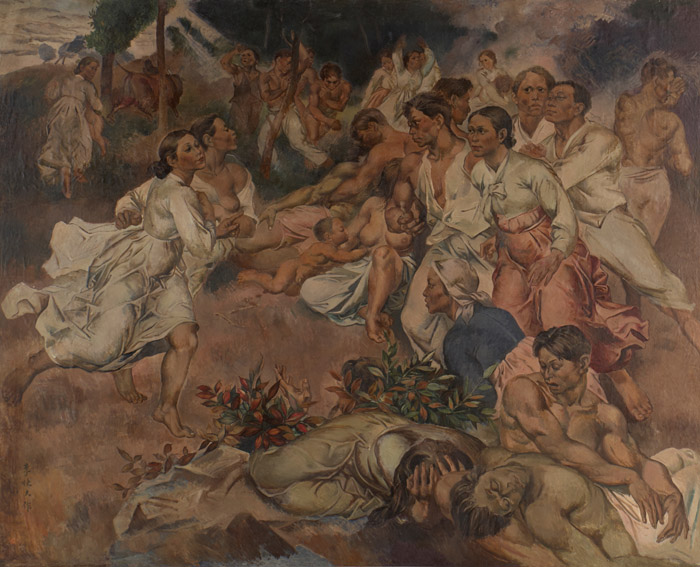
The exhibition is divided into three sections. The "Depicting Love" section focuses on the period between 1929 and 1937 and displays watercolor paintings Lee produced while he attended Whimoon High School and the portraits of his wife, which he produced when he studied art in Japan.
The "Searching for Tradition" section (1938-1944) shows how he sought to develop his own style by adding traditional Korean elements to Western paintings. Finally, the "Embracing an Era" section (1945-1953) displays his works depicting the political turmoil after independence.
The highlight of the exhibition is the "Group of People" series. Lee described the turbulent time after Korean independence during his heyday in his 30s. In those paintings, he portrays a people who are lost in the midst of turbulent times, shortly after experiencing the joy of independence. Lee's "Group of People 1 -- Notification of Liberation" and "Group of People 4," both produced in 1948, and some 150 oil paintings are the possessions of his bereaved family.
"Self-portrait in Traditional Coat" is one of his masterworks and clearly shows his personality. The self-portrait demonstrates his vigorous confidence and sense of duty as a painter who is embracing a new era. The painter wears a traditional blue overcoat and looks straight at the viewer in a dignified manner.
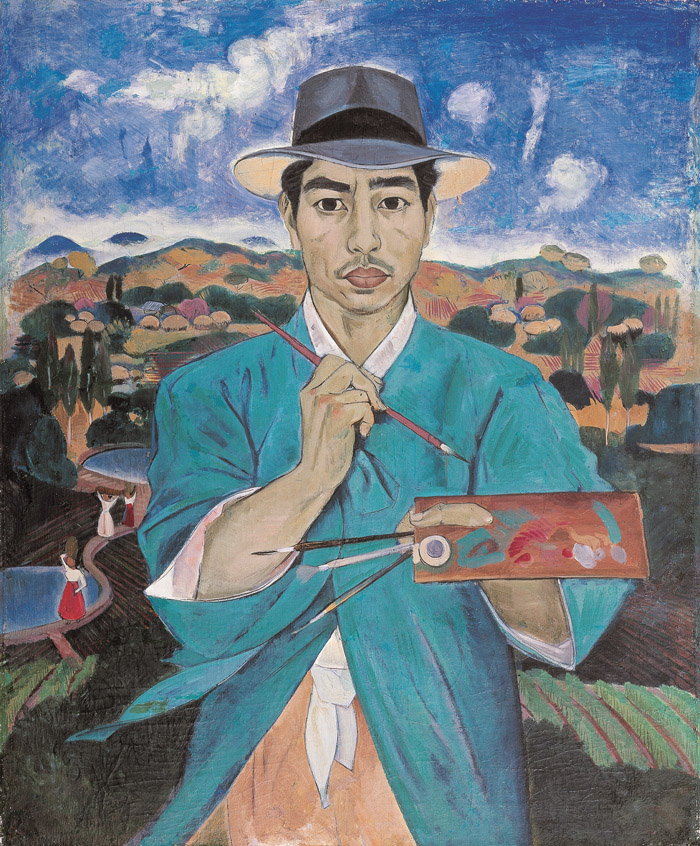
Lee was born in 1913 and was the youngest son of a large landowner. After graduating from Whimoon High School, he went to Japan to attend the Imperial Art School. Lee spent much time with his wife, Yu Gapbong, an educated woman in those days, while studying in Japan and produced a large number of portraits of her.
After graduating from the Imperial Art School, he submitted "Destiny" for the Nikaten, one of the most prestigious Japanese exhibitions, and it was successfully shown at the exhibition. In 1939 and 1940, he entered the same exhibition and built his fame as an artist. Upon his return to Korea, he founded the Joseon New Artist Association together with other artists.
The joy of independence was short-lived. With the breakout of the Korean War five years later, he suffered a tragic fate. He could not escape from the North Korean army due to his elderly mother and pregnant wife. He had no choice but to help produce North Korean propaganda paintings. He was later kept in a prisoner of war camp run by the South Korean army and ended up going to live in the North after the war.
Lee produced most of his masterworks in the 1930s and 1940s, but his presence became a taboo in the South due to his move to North Korea. It was only in 1988 that he was reinstated and his works started to receive a spotlight again.
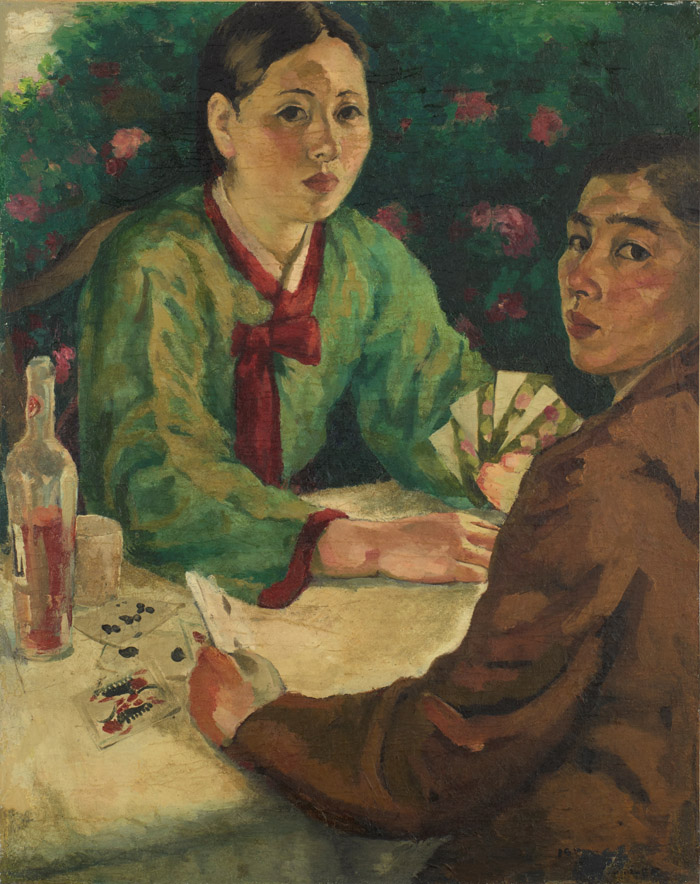
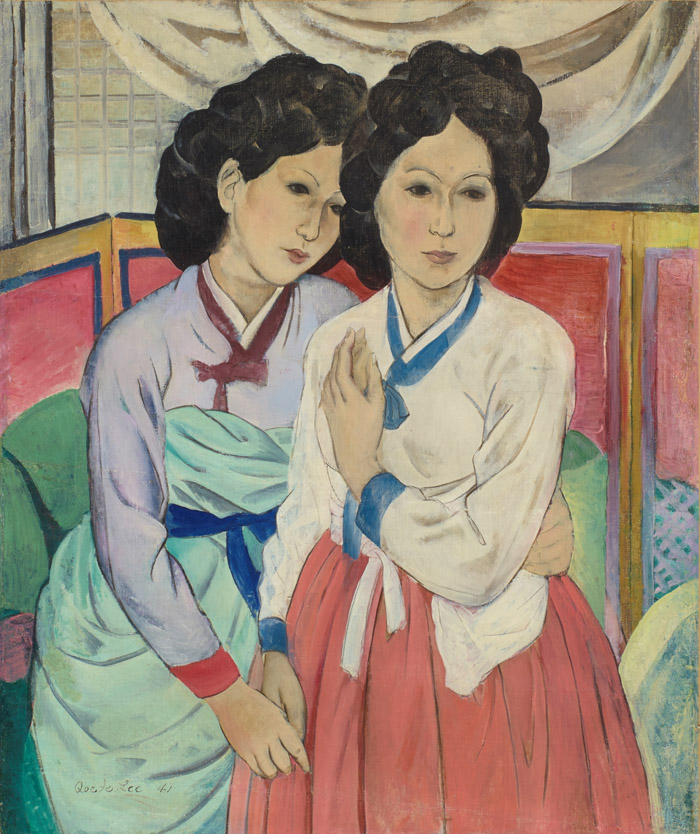
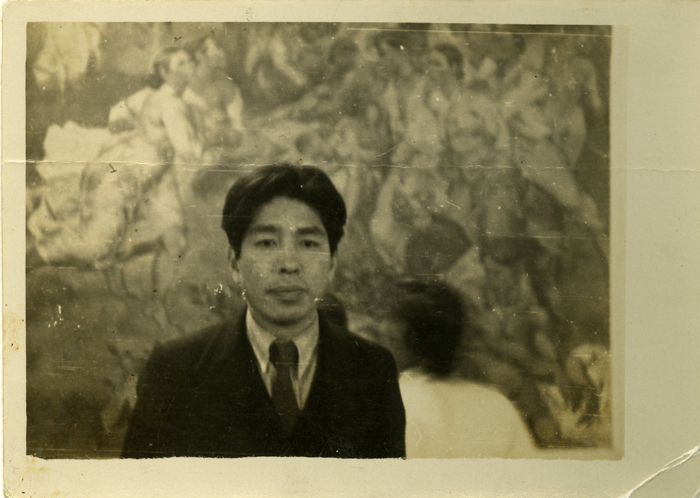
The exhibit continues until November 1. For more information, please visit the MMCA's homepage (www.mmca.go.kr) or call (02) 3701-9540.
By Limb Jae-un
Korea.net Staff Writer
Photos courtesy of the MMCA
jun2@korea.kr
Even during colonial times, Lee established his own style based on Korean history and traditions. Later, he produced some of his masterpieces amid political turmoil arising from tension between the left wings and the right wings of society after independence.
A large retrospective on Lee Quede, a master artist of the early 20th century, is now underway at the Deoksugung Palace branch of the National Museum of Modern and Contemporary Art (MMCA) in Seoul. "An Epic of Liberation: Lee Quede" is designed to shed new light on the painter and his works, as 2015 is the 70th anniversary of Korea's independence and the 50th anniversary of his death. A total of 400 paintings and drawings will be shown in the exhibition, including his famous works such as "Group of People 1 -- Notification of Liberation" and "Self-portrait in Traditional Coat."

Lee Quede describes the hope and confusion that existed across Korean society after independence in his painting 'Group of People 1 -- Notification of Liberation' (1948). The painting is quite large, measuring 2.2 meters by 1.8 meters.
The exhibition is divided into three sections. The "Depicting Love" section focuses on the period between 1929 and 1937 and displays watercolor paintings Lee produced while he attended Whimoon High School and the portraits of his wife, which he produced when he studied art in Japan.
The "Searching for Tradition" section (1938-1944) shows how he sought to develop his own style by adding traditional Korean elements to Western paintings. Finally, the "Embracing an Era" section (1945-1953) displays his works depicting the political turmoil after independence.
The highlight of the exhibition is the "Group of People" series. Lee described the turbulent time after Korean independence during his heyday in his 30s. In those paintings, he portrays a people who are lost in the midst of turbulent times, shortly after experiencing the joy of independence. Lee's "Group of People 1 -- Notification of Liberation" and "Group of People 4," both produced in 1948, and some 150 oil paintings are the possessions of his bereaved family.
"Self-portrait in Traditional Coat" is one of his masterworks and clearly shows his personality. The self-portrait demonstrates his vigorous confidence and sense of duty as a painter who is embracing a new era. The painter wears a traditional blue overcoat and looks straight at the viewer in a dignified manner.

'Self-portrait in Traditional Coat' (1940s) shows Lee's identity as a Korean and as a painter of Western-style art.
Lee was born in 1913 and was the youngest son of a large landowner. After graduating from Whimoon High School, he went to Japan to attend the Imperial Art School. Lee spent much time with his wife, Yu Gapbong, an educated woman in those days, while studying in Japan and produced a large number of portraits of her.
After graduating from the Imperial Art School, he submitted "Destiny" for the Nikaten, one of the most prestigious Japanese exhibitions, and it was successfully shown at the exhibition. In 1939 and 1940, he entered the same exhibition and built his fame as an artist. Upon his return to Korea, he founded the Joseon New Artist Association together with other artists.
The joy of independence was short-lived. With the breakout of the Korean War five years later, he suffered a tragic fate. He could not escape from the North Korean army due to his elderly mother and pregnant wife. He had no choice but to help produce North Korean propaganda paintings. He was later kept in a prisoner of war camp run by the South Korean army and ended up going to live in the North after the war.
Lee produced most of his masterworks in the 1930s and 1940s, but his presence became a taboo in the South due to his move to North Korea. It was only in 1988 that he was reinstated and his works started to receive a spotlight again.

'Couple Playing Cards' (1930s) portrays Lee Quedeand his wife.

'Women' (1941)

Lee Quede stands in front of 'Group of People 1 -- Notification of Liberation' (1948).
The exhibit continues until November 1. For more information, please visit the MMCA's homepage (www.mmca.go.kr) or call (02) 3701-9540.
By Limb Jae-un
Korea.net Staff Writer
Photos courtesy of the MMCA
jun2@korea.kr
